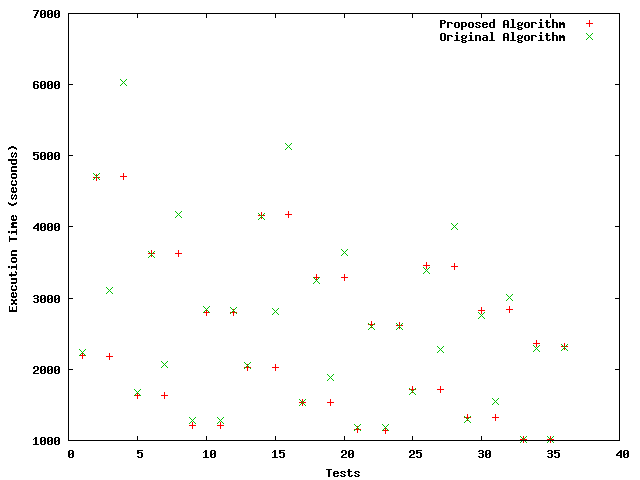SoC 2008/x264 Improve Fast Inter Refinement and Adaptive Quantization
This project is part of Google Summer of Code 2008.
|
Abstract
The goal of this project is to improve heuristics and decision-making for inter refinement in order to improve efficiency given average encoding settings. This will involve various early termination heuristics along with methods of deciding which partition modes need to be searched while performing minimal actual searching on them. I also plan to experiment with different methods that can be used to improve psycho-visual optimizations for mode decisions and quantization. This will include improving variance adaptive quantization by experimenting with different methods which could be used to weight the variance in order to select a more optimized quantizer.
Goals
Goals:
- Improve inter prediction algorithms through the addition of early termination heuristics
- Analyze the costs of using the different reference frames and partition modes.
- Uses these results to create rules for early termination in order to avoid exhaustive searches.
- Explore the usage of texture and shape in inter prediction
- Implement curvature/first derivative algorithms (edge detection).
- Compare edge count with the costs associated with the reference frames and partition modes.
- Explore other metrics of texture/shape and their usefulness in this situation.
- Implement early termination heuristics that depend on these texture and shape metrics.
- Improve psycho-visual optimizations for mode decisions and quantization
- Explore methods for SSIM-QNS optimization.
- Adaptive dead zone / lambda.
- Make improvements upon the Adaptive Quantization algorithms to achieve higher visual quality.
- Investigate the usage of NSSE and noise shaping techniques.
- Explore the usage of curvature as a means of weighting the variance in order to achieve a more optimized quantizer.
- Determine the most effective metric or combination of metrics.
Weekly Progress
Week 4
Due to university commitments this was my first real week working on the project. I have primarily spent this week getting more familiar with the x264 code. To help familiarize myself with the code I have implemented a fast inter mode search algorithm which was inspired from an IEEE conference paper.
Here is the pseudo code for the search method. The patch can be found here
analyse_mode_16x16()
threshold1 = 48 * pow(1.12246,qp)
threshold2 = threshold1 + lambda2*192
if ( cost_16x16 < threshold1 )
{
done
}
else if ( cost_16x16 < threshold2 )
{
analyse_mode_16x8()
analyse_mode_8x16()
}
else
{
analyse_mode_8x8()
if ( cost_8x8 < cost_16x16 )
{
if( frame_type == B_FRAME )
done
else
analyse_mode_sub8x8()
}
else
{
analyse_mode_16x8()
analyse_mode_8x16()
}
}
I am currently running many tests comparing the current algorithm with the proposed algorithm to see where it can be improved. Overall I am conducting 36 tests which are being driven with this bash script. The script compares the results of a patched x264 and an unmodified x264 on two different sources with 3 different bitrates (1500,1000,500), 3 different numbers of reference frames (8,4,1), as well as with and without mixed-refs. Results will be posted shortly!
Week 5
The tests have finished and  here is a graph of each tests overall execution time. As you can see, the proposed algorithm provides an average decrease in execution time. Where it does not show improvement the execution times are roughly similar.
here is a graph of each tests overall execution time. As you can see, the proposed algorithm provides an average decrease in execution time. Where it does not show improvement the execution times are roughly similar.
Here is an accuracy comparison graph which shows the change in SSIM, PSNR, and bitrate between the proposed and original algorithm for each of the 36 test cases. On average the SSIM difference is very close to zero and the PSNR difference can be bounded by approximately .1. In most of the cases the bitrate difference is less than zero.
Schedule
All finals will be finished June 10th and starting June 11th I will be working full time. I will be camping sometime in late June for 1.5 days and possibly once more later in the summer. Other than that I do not plan to take any more vacation.
School starts back up ~28th of September so if all goes as planned my project will be completed by then :]